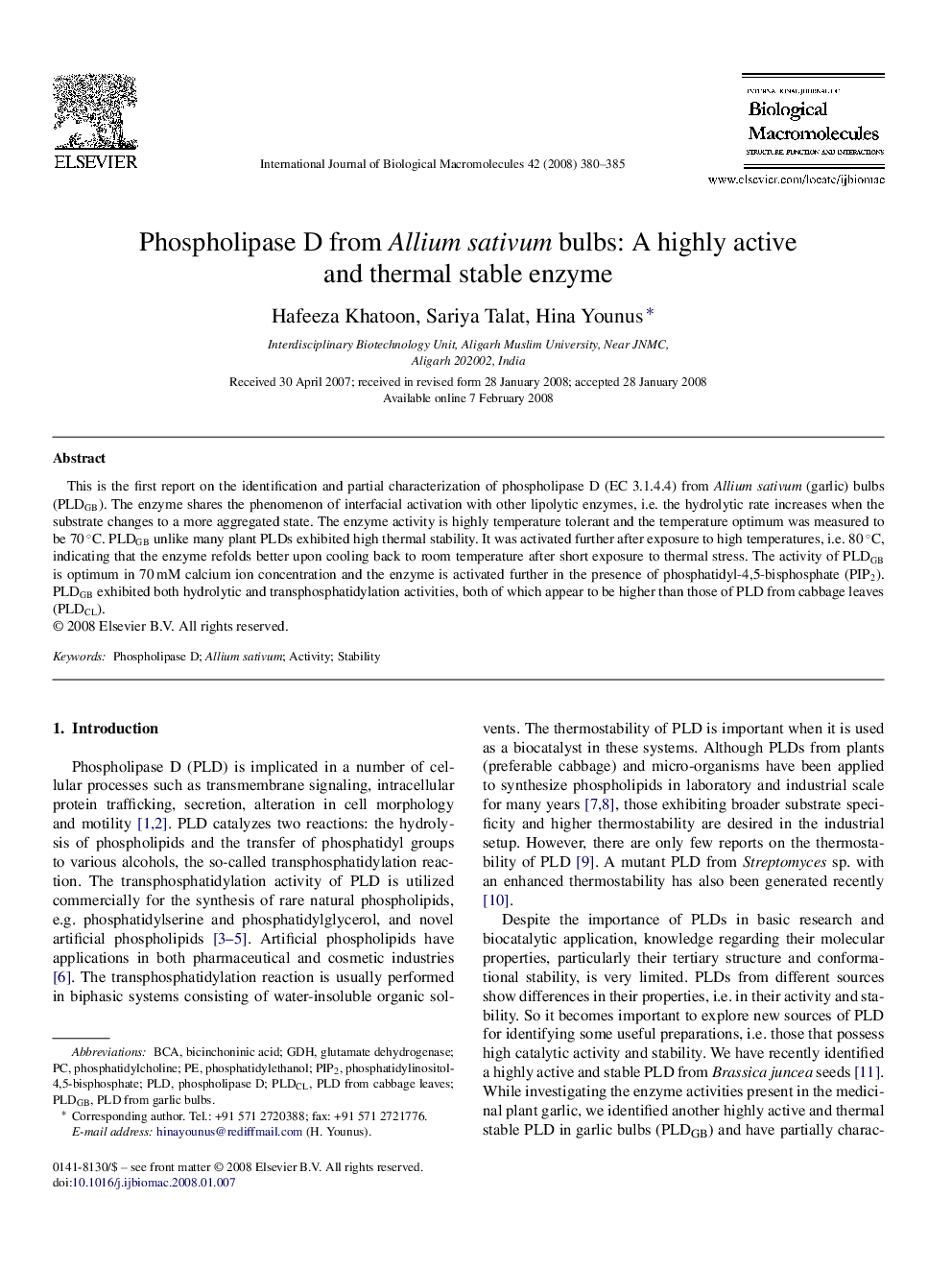| Article ID | Journal | Published Year | Pages | File Type |
|---|---|---|---|---|
| 1988201 | International Journal of Biological Macromolecules | 2008 | 6 Pages |
Abstract
This is the first report on the identification and partial characterization of phospholipase D (EC 3.1.4.4) from Allium sativum (garlic) bulbs (PLDGB). The enzyme shares the phenomenon of interfacial activation with other lipolytic enzymes, i.e. the hydrolytic rate increases when the substrate changes to a more aggregated state. The enzyme activity is highly temperature tolerant and the temperature optimum was measured to be 70 °C. PLDGB unlike many plant PLDs exhibited high thermal stability. It was activated further after exposure to high temperatures, i.e. 80 °C, indicating that the enzyme refolds better upon cooling back to room temperature after short exposure to thermal stress. The activity of PLDGB is optimum in 70 mM calcium ion concentration and the enzyme is activated further in the presence of phosphatidyl-4,5-bisphosphate (PIP2). PLDGB exhibited both hydrolytic and transphosphatidylation activities, both of which appear to be higher than those of PLD from cabbage leaves (PLDCL).
Keywords
Related Topics
Life Sciences
Biochemistry, Genetics and Molecular Biology
Biochemistry
Authors
Hafeeza Khatoon, Sariya Talat, Hina Younus,
